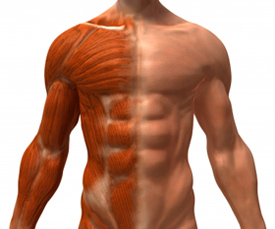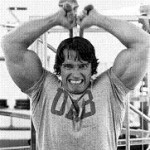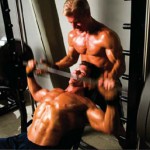When we’re in the gym to add muscle mass, how we approach each exercise is imperative to achieving our ultimate goal of taxing the body to the point that it stimulates growth (muscle fatigue). For example, enhancing training by using the Mind-Muscle-Connection to focus on your target muscle group doing most (if not all) of the work will yield greater results than simply pushing the weight and doing the movement. Constantly improving each week in a particular exercise (whether through weight increase, shorter rest periods, etc.) will make sure your body is constantly pushing its limits, allowing for progressive overload. Thirdly, various different ways of performing an exercise (super sets, negatives, drop sets, etc.) will make sure that you destroy that muscle group thoroughly before leaving the gym each and every time you are in there. All of these methods are useful and effective, not on their own, but because they combine together at the end of the day to achieve one thing: the stimulation of muscle hypertrophy.
Muscle hypertrophy, in basic terms, is muscle growth. However, as we very well know, stimulating muscle hypertrophy and achieving muscle hypertrophy are two very different things. Without giving your body the resources it needs to repair itself after you have effectively stimulated it towards growth, none of this matters. Therefore, before we dive into the main topic of this article, make sure that you are aware of the importance of eating above maintenance calories when attempting to put on muscle mass. I always stress this, and I always will continue to do so. After all, you can’t add a section to the house without the bricks, right?
Besides everything mentioned in the first paragraph in regards to stimulating muscle hypertrophy, there is something very important that you can utilize that cannot be grouped in with everything else mentioned. It is not a weight training tip, but rather a methodology. It is a “way” to train, that may be obvious for some but I see very rarely utilized in the gym. That methodology is the idea of always training under constant tension.
What is constant tension? Well, when you’re doing a set of bench press to presumably work on your chest, what you see almost everybody do is complete the rep by locking out their elbows (finishing the repetition at the top by straightening the arms before going back down for another rep). It is not the wrong thing to do by any means (outside of placing extra stress on the joints – but that’s something for the long-term that you need to weigh out for yourself), but it is nonetheless not the best method to use when completing a set. Why? Because we are trying to strive for efficiency, achieve muscle fatigue (which leads to stimulating muscle hypertrophy) while minimizing time spent doing so.
Constant tension is a method of training where you never lock out at the top of a movement, instead, you reach as high as you can without doing so, and immediately go in for another rep. This does not allow your muscles to rest (even if for a second) by straightening your arms on bench press, as your chest is constantly under tension until you are done with your set. For a reverse example, if you are doing barbell curls you would squeeze strongly at the top and instead of going completely down with your hands you would stop just short of straightening your arms, and go back up. Your bicep would be constantly involved in the workload with absolutely no rest until you have finished your set. You can imagine that doing this will lead to dealing with slightly lower weights, rightfully so.
With constant tension not only are you maxing out the capabilities of your muscle group on each exercise by drilling them the entire time your set is active, but you are also making sure that it doesn’t get a chance to breathe in the process. Increasing productivity while stimulating muscle hypertrophy sounds pretty good doesn’t it? Now keep in mind, that doesn’t mean that you go grab weights and give yourself the freedom of flying through an exercise because you’re never completing the rep. Constant tension also holds importance when it comes to timing, as it involves the Mind-Muscle-Connection. You never want to be doing reps “fast”, you always want to increase that muscle group’s time under tension (the time it takes for you to do a rep) by taking at least a good 3-4 seconds on everything. With that in mind, combine time under tension with constant tension, and you can see where reaching muscle fatigue and stimulating muscle hypertrophy come together.
Again, constant tension is a methodology of training and a mentality of how you should approach hitting your muscles. It can be applied to any exercise, for any muscle group. Combine it with any of the great tips discussed early in the paragraph and you will be making sure that you’re taking your body to the limit each time you’re in the gym. Add in a good diet that gives you the nutrients you need, and you will give your body what it needs for muscle hypertrophy. For more on giving your body the training it needs to grow, check out our Gain Muscle article. Good luck!








4 Comments »